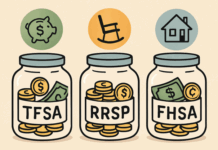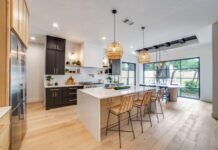Buying your first home is one of life’s most exciting milestones—and one of the most complex. Between mortgage paperwork, competitive offers, and Pinterest-fueled design dreams, the process can feel like a juggling act of finances, timing, and taste. But with the right plan in place, the journey from securing your loan to styling your living room can be both strategic and deeply rewarding.
This guide walks you through each phase of the process, offering clear steps for navigating home financing, evaluating design potential, and turning a house into a home that reflects both your style and lifestyle.
Step 1: Secure Smart Financing That Works for You
Before you even begin house hunting, understanding your loan options is crucial. Many first-time buyers are surprised to learn how accessible homeownership can be—especially through government-backed financing.
In many parts of the country, government-backed loan programs are making homeownership more accessible to first-time buyers. For example, San Antonio FHA loans help buyers qualify with lower credit scores and smaller down payments. In Denver, Colorado, FHA programs have been particularly beneficial for younger professionals navigating a competitive urban market with high entry costs. Meanwhile, in cities like El Paso, Texas, these loans offer a flexible path to homeownership for growing families looking for space without overstretching their budgets.
It’s also important to recognize what you’re up against. The median price of a home in the U.S. has risen substantially in recent years, putting pressure on buyers to act strategically. According to data from the Federal Reserve, housing prices have been on a steady upward climb, making affordability and smart financing more important than ever.
Step 2: House Hunting with Design Potential in Mind
Once you’re pre-approved, the search begins. But beyond location and square footage, design-minded buyers should look for a home’s underlying potential. Think about natural light, room flow, ceiling height, and renovation flexibility. A property that feels uninspiring at first glance may become a canvas for transformation with the right elements in place.
In fast-moving markets, finding the perfect turnkey property is rare. Instead, prioritize homes where foundational elements are solid—even if the finishes are outdated. With a smart renovation plan, you can unlock major value while creating a space that aligns with your vision.
Understanding the home’s long-term value can also play into your decision-making. Today, tools that integrate AI into property valuation are becoming increasingly helpful for assessing a home’s true worth based on data patterns and regional trends. These insights can help first-time buyers make informed offers and avoid emotional overspending.
Step 3: Close with Confidence—Then Plan Your Design Priorities
Closing day is both a celebration and a checkpoint. While the ink dries on your paperwork, it’s time to shift focus toward your next big decisions: what improvements to prioritize first.
Most new homeowners balance excitement with budget constraints. Think critically about what needs attention now versus what can wait. Paint, lighting, and flooring often offer high-impact changes for relatively low cost—and can dramatically shift how the space feels from day one.
Creating a post-closing checklist with design tasks, shopping lists, and timelines will keep you focused without feeling overwhelmed. Your home doesn’t need to be “complete” on move-in day—it just needs to reflect your first steps toward making it yours.
Step 4: Start with Foundational Design Choices
Interior design can quickly get overwhelming, but starting with core elements helps set the tone. Begin with walls, lighting, and floors. Neutral tones with layered textures provide a strong base for nearly any style, whether you’re going boho, industrial, or minimal modern.
Incorporating smart home features—like thermostats, automated blinds, or lighting systems—can also increase both comfort and resale value. These upgrades don’t have to be expensive and can often be installed gradually over time.
As you develop your style, lean on trusted resources for guidance. It’s also helpful to consider how your lifestyle may evolve in the home over time. Design with flexibility in mind—multi-use rooms, modular furniture, and lighting that shifts with your schedule all contribute to a home that lives with you, not just around you.
Step 5: Make It Yours—Personal Touches That Elevate Your Space
Once the major updates are in place, the personalization begins. This is where your story shines through. Art, plants, textiles, and family heirlooms turn a property into a reflection of who you are.
If you’re coming from a rental, resist the urge to buy everything new all at once. Blend existing pieces with a few intentional upgrades. You’ll appreciate the layered, authentic vibe it creates—and your budget will too.
Thinking long-term? It’s worth exploring whether your home could become a future investment. At some point, you may be weighing whether to sell your home or rent it, and knowing your goals from the start can shape how you style and maintain your space moving forward.
Conclusion
From financial prep to final flourishes, buying your first home is a uniquely rewarding process. With the right loan, a sharp eye for design potential, and a clear plan, it’s entirely possible to build a space that supports your lifestyle and inspires your daily life. Every detail you add—whether budget-friendly or bold—helps transform your new house into a place that truly feels like home.
Find a Home-Based Business to Start-Up >>> Hundreds of Business Listings.














































